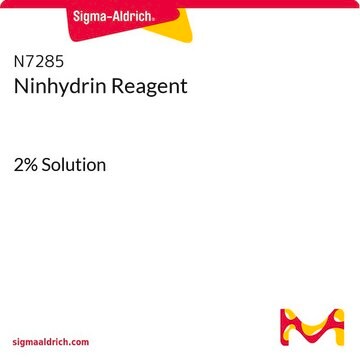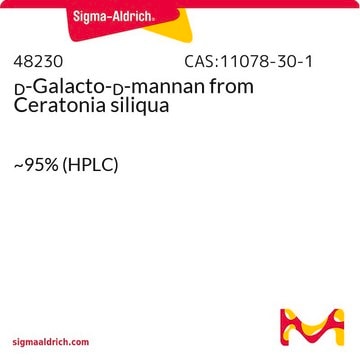P2297
Picrylsulfonic acid solution
5 % (w/v) in H2O, BioReagent, suitable for determination of primary amines
Synonym(s):
2,4,6-Trinitrobenzenesulfonic acid solution, TNBS
About This Item
Recommended Products
product line
BioReagent
concentration
5 % (w/v) in H2O
suitability
suitable for determination of primary amines
storage temp.
2-8°C
SMILES string
OS(=O)(=O)c1c(cc(cc1[N+]([O-])=O)[N+]([O-])=O)[N+]([O-])=O
InChI
1S/C6H3N3O9S/c10-7(11)3-1-4(8(12)13)6(19(16,17)18)5(2-3)9(14)15/h1-2H,(H,16,17,18)
InChI key
NHJVRSWLHSJWIN-UHFFFAOYSA-N
Looking for similar products? Visit Product Comparison Guide
Related Categories
General description
Application
- to assess the efficiency of carboxymethyl lysine (CML) modifications of exposed primary amines
- to incubate zona intact bovine embryos for the differential staining of blastocysts
- to induce irritable bowel syndrome (IBS) in mice and to study its effects on Clostridium butyricum
related product
Signal Word
Danger
Hazard Statements
Precautionary Statements
Hazard Classifications
Eye Dam. 1 - Skin Corr. 1B - Skin Sens. 1
Storage Class Code
8B - Non-combustible corrosive hazardous materials
WGK
WGK 3
Flash Point(F)
Not applicable
Flash Point(C)
Not applicable
Certificates of Analysis (COA)
Search for Certificates of Analysis (COA) by entering the products Lot/Batch Number. Lot and Batch Numbers can be found on a product’s label following the words ‘Lot’ or ‘Batch’.
Already Own This Product?
Find documentation for the products that you have recently purchased in the Document Library.
Customers Also Viewed
Our team of scientists has experience in all areas of research including Life Science, Material Science, Chemical Synthesis, Chromatography, Analytical and many others.
Contact Technical Service








